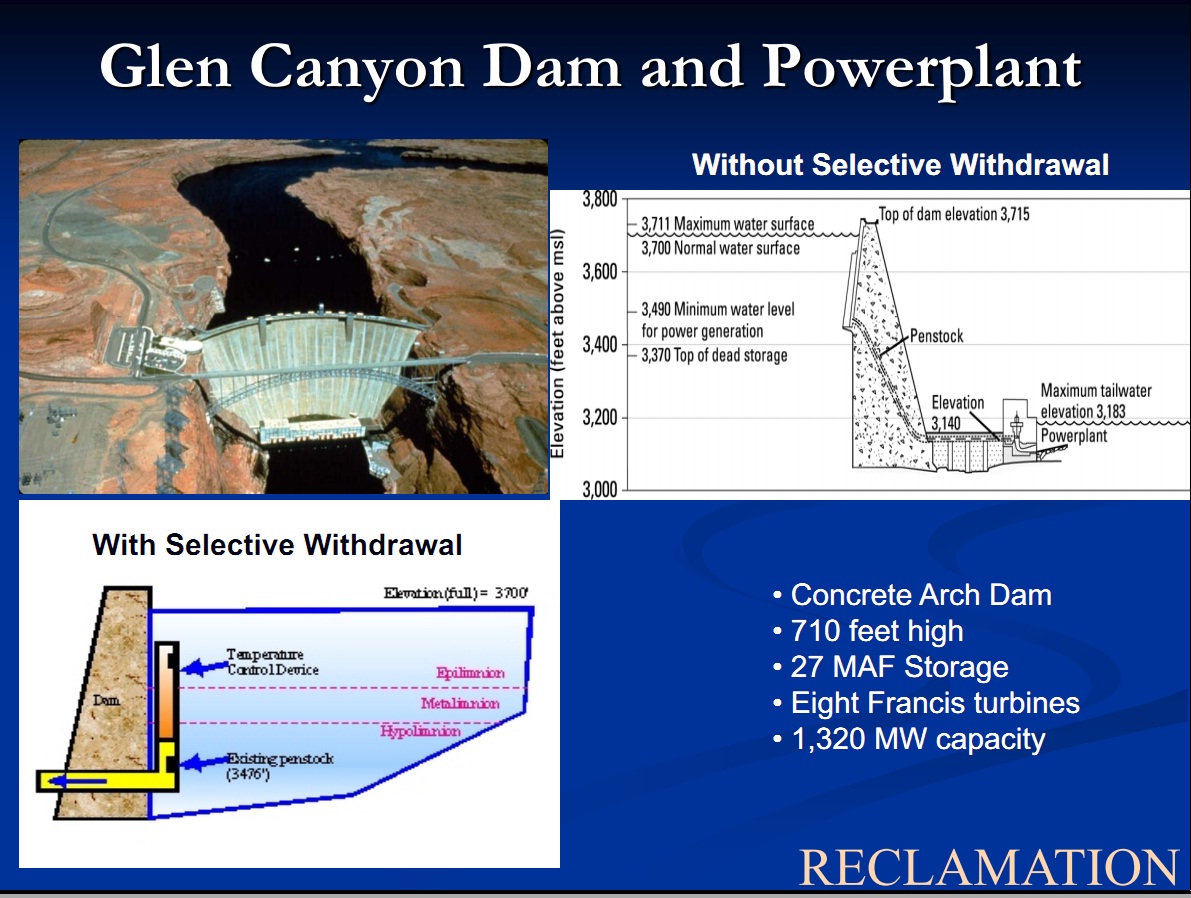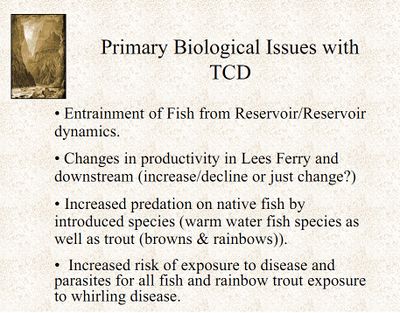- Record Colorado River flow reductions averaged 19.3% per year during 2000-2014. One-third or more of the decline was likely due to warming.
- Unabated greenhouse gas emissions will lead to continued substantial warming, translating to twenty-first century flow reductions of 35% or more.
- More precipitation can reduce the flow loss, but lack of increase to date and large megadrought threat, reinforce risk of large flow loss.
Why less water? 2000-14 Temperatures are 1.6°F above 1906-99 Average
- Longer growing season
- More warmth on any given day
- At some point, possibly more plants and growth upslope
- More evaporation from soils
- More opportunity for sublimation
- More atmospheric demand
Since the late 1980s increases in temperature have caused a substantial reduction in runoff efficiency. Over the last 3 decades temperature has reduced the flow by 7% [2]
|
|
Many scientists and the FWS believe the ability to increase the dam's discharge temperature is a key element in the recovery of native fish near the Little Colorado River. Reclamation has prepared an Environmental Assessment (EA), with subsequent peer review, on the proposed temperature control modifications and its potential impacts. The peer review, completed April 1999 and the draft Plan and EA, completed January 1999, are available for on-line viewing and as a download for off-line viewing (download). (Online viewing is NOT recommended for slow 56/28.8KB) connections). Based on an open, public review of the EA and further consultation with the FWS, Reclamation will decide whether or not to proceed with the $15 million modification. Construction may start as soon as FY-2000 and would be completed in approximately two years. Post construction testing would be accomplished by the Grand Canyon Monitoring and Research Center and Adaptive Management Work Group.
Temperature controls have already been installed on several other dams including: Flaming Gorge, Shasta, Hungry Horse, and Jordanelle Dams. Flaming Gorge Dam on the Green River (a tributary to the Colorado River) is another major dam on the Colorado River Storage Project system, of which Glen Canyon Dam is the key storage unit. Located upstream of Glen Canyon Dam, Flaming Gorge Dam's intake structures were modified with temperature controls in 1978. The result of these controls has been a remarkable positive impact on the river system below the dam. Trout growth rates immediately below the dam increased significantly in response to the warmer water. At the same time, native fish are also doing better downstream, near the Yampa River. Documents concerning the temperature control device are available for your review include:
The Summary of Findings from the TCD Workshop held on January 22-24, 2001, is now available.
|

